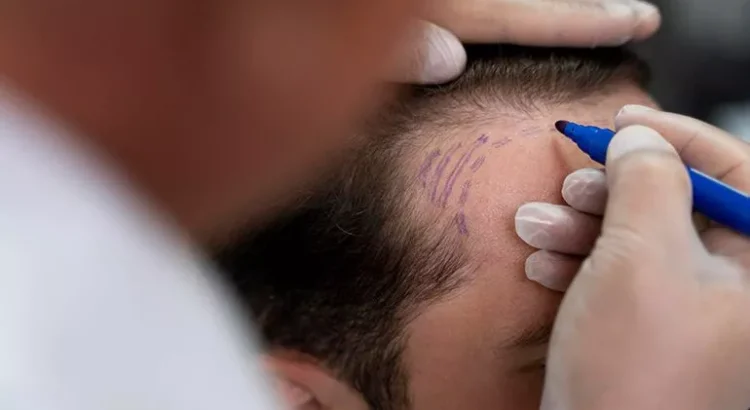Contents;
What Is Fue Hair Transplantation?
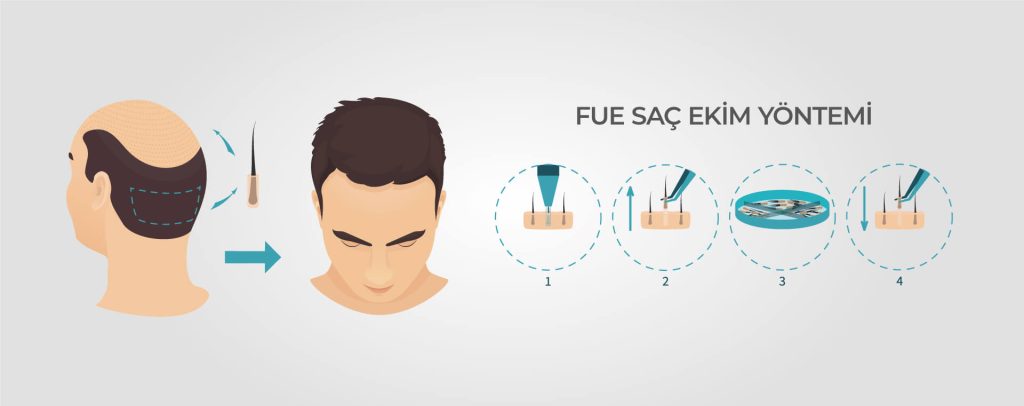
FUE stands for Follicular Unit Extraction, which is a hair transplantation procedure that involves harvesting individual hair follicles from a donor area and transplanting them to a recipient area. This method has gained significant popularity in recent years due to its effectiveness and minimal invasiveness compared to traditional hair transplant techniques.
The procedure begins with the extraction of hair follicles from the back or sides of the head, where hair is genetically resistant to balding. The surgeon uses a special instrument to make tiny incisions around the follicular units, which are then individually extracted. These follicles are carefully collected and prepared for transplantation.
Once the donor follicles are harvested, the recipient area is prepared by making small incisions or slits in the scalp. The surgeon meticulously inserts the harvested follicles into these incisions, paying attention to their orientation and arrangement to achieve natural-looking results. The transplanted hair follicles will eventually grow hair in the new location, blending seamlessly with the existing hair.
- FUE hair transplantation offers several advantages over traditional hair transplant methods.
- First and foremost, it does not leave a linear scar at the donor site, making it an ideal option for individuals who prefer short hairstyles or those with limited donor hair.
- The procedure also allows for a quicker recovery time and minimal post-operative discomfort compared to other techniques.
| Advantages of FUE Hair Transplantation |
|---|
| • No visible linear scar |
| • Faster recovery time |
| • Minimal post-operative discomfort |
However, it is important to consider the potential risks and side effects associated with FUE hair transplantation. As with any surgical procedure, there is a risk of infection, bleeding, and scarring. Additionally, some individuals may experience temporary hair shedding or changes in hair texture during the recovery phase. These side effects are typically temporary and resolve on their own over time.
It is crucial to consult with a qualified and experienced hair transplant surgeon to discuss your individual case and determine if FUE hair transplantation is the right option for you. They will be able to assess your hair loss pattern, donor hair availability, and expectations to provide personalized advice and realistic outcomes.
In conclusion, FUE hair transplantation is a modern and effective technique for hair restoration. Its advantages, such as no visible linear scar, faster recovery time, and minimal discomfort, make it a popular choice among both men and women experiencing hair loss. However, it is essential to thoroughly understand the procedure, its potential risks, and consult with a knowledgeable professional before making a decision.
How Does Fue Hair Transplantation Work?
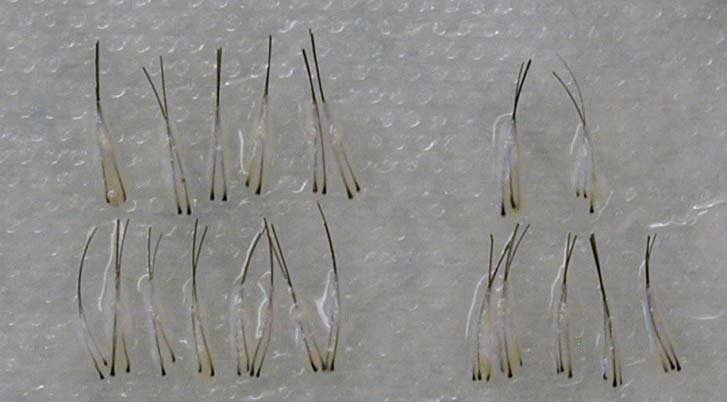
FUE stands for Follicular Unit Extraction, which is a hair transplantation technique that has gained popularity in recent years. This advanced method involves the extraction of individual hair follicles from the donor area and implanting them into the recipient area, where the hair is thinning or balding. Unlike traditional hair transplant methods, FUE does not require a strip of scalp to be removed, which means there is no linear scar left behind.
In the FUE hair transplantation process, the surgeon uses a specialized instrument called a micropunch to extract individual follicular units. These units typically contain 1-4 hairs each, allowing for a more natural-looking result. The donor area is usually located at the back or sides of the head, where the hair is genetically resistant to balding. The micropunch creates tiny, circular incisions around each follicular unit, which are then carefully extracted using forceps. This process is repeated until enough grafts have been collected for transplantation.
Once the grafts have been harvested, the surgeon prepares the recipient area for transplantation. Small, recipient sites are created using a fine needle or blade, and the extracted follicular units are meticulously placed into these sites. The surgeon pays attention to the angle, direction, and density of the transplanted hair to ensure a natural and aesthetically pleasing outcome. The process requires precision and skill, as each follicular unit needs to be placed in the correct position to achieve the desired result.
| Key Benefits of FUE Hair Transplantation: |
|---|
| 1. Less scarring: Since FUE does not involve the removal of a strip of scalp, there is minimal scarring compared to traditional methods. |
| 2. Natural results: Transplanted hair appears natural and blends seamlessly with existing hair. |
| 3. Faster recovery: The healing time is usually shorter compared to other hair transplantation techniques. |
| 4. Versatility: FUE can be used to transplant hair on various areas of the body, not just the scalp. |
| 5. Less discomfort: FUE is generally less painful and causes minimal discomfort during and after the procedure. |
What Are The Advantages Of Fue Hair Transplantation?
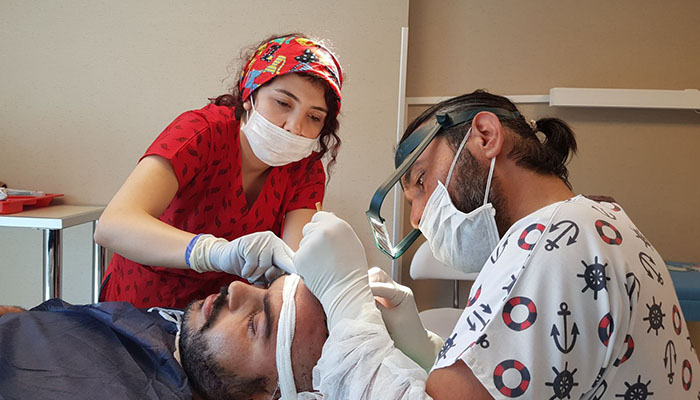
FUE hair transplantation, also known as Follicular Unit Extraction, is a surgical procedure that involves the extraction of individual hair follicles from one part of the body, usually the back of the head, and implanting them into areas of the scalp that are experiencing hair loss or thinning. This procedure is widely regarded as one of the most advanced and effective hair transplantation techniques available today.
There are several advantages of FUE hair transplantation that make it a popular choice among individuals seeking to restore their hair. Firstly, FUE does not require the removal of a large strip of scalp, unlike the traditional Follicular Unit Transplantation (FUT) method. This means that there are no noticeable scars or stitches after the procedure, leading to a more natural-looking result.
Additionally, FUE provides the flexibility to harvest hair follicles from various parts of the body, not just the back of the head. This can be particularly beneficial for individuals who have limited donor hair in the traditional donor site or have previous scarring in that area.
- Minimal discomfort: FUE hair transplantation is a minimally invasive procedure, resulting in minimal discomfort during and after the surgery. Patients typically experience minimal pain and a quicker recovery compared to other hair transplantation methods.
- Natural-looking results: Since FUE involves the transplantation of individual hair follicles, the results are highly natural and undetectable. The transplanted hairs will grow in the same direction as the surrounding hair, blending seamlessly with the existing hairline.
- Quick recovery: With FUE, the recovery time is relatively fast. Most patients can resume their normal activities within a few days and can usually return to work within a week. The healing process is generally quicker and less uncomfortable compared to traditional hair transplantation methods.
In conclusion, FUE hair transplantation offers several advantages that make it an appealing option for individuals seeking to address hair loss or thinning. The procedure’s minimally invasive nature, natural-looking results, and quick recovery time have contributed to its growing popularity. If you are considering hair transplantation, consulting with a qualified hair transplant surgeon will help determine if FUE is the right option for you.
Are There Any Risks Or Side Effects Of Fue Hair Transplantation?
FUE, or Follicular Unit Excision, is a hair transplantation technique that has gained popularity in recent years. It involves extracting individual hair follicles from the donor area and implanting them into the recipient area. FUE is considered a minimally invasive procedure and is known for its natural-looking results. However, like any other medical procedure, there are some risks and potential side effects associated with FUE hair transplantation.
One of the main risks of FUE hair transplantation is infection. Although rare, there is a small chance of developing an infection at the donor or recipient site. To minimize this risk, it is essential to follow proper hygiene and post-operative care instructions provided by the surgeon. In addition, some patients may experience mild swelling and redness in the treated areas, which usually subside within a few days.
Another potential risk is scarring. While FUE leaves minimal scarring compared to traditional hair transplantation methods, there is still a possibility of developing small scars at the donor site. These scars are typically tiny dots that are easily hidden by surrounding hair. However, in rare cases, patients with a predisposition to abnormal scarring may experience more noticeable scars.
- Scarring at the donor site
- Infection at the donor or recipient site
- Swelling and redness in the treated areas
Additionally, some patients may encounter a condition called “shock loss.” This refers to the temporary shedding of existing hair in the recipient area due to the trauma caused by the transplantation process. However, this is usually a temporary side effect, and the hair regrowth should occur within a few months.
| Potential Risks of FUE Hair Transplantation: |
|---|
| Scarring at the donor site |
| Infection at the donor or recipient site |
| Swelling and redness in the treated areas |
It is essential to choose a skilled and experienced surgeon to minimize these risks and achieve the best possible outcome. Before undergoing FUE hair transplantation, it is crucial to have a thorough consultation with a qualified professional who can assess your individual suitability for the procedure and discuss any potential risks or side effects. By understanding the risks, patients can make informed decisions and have realistic expectations about the FUE hair transplantation process.
How Long Does It Take To Recover From Fue Hair Transplantation?
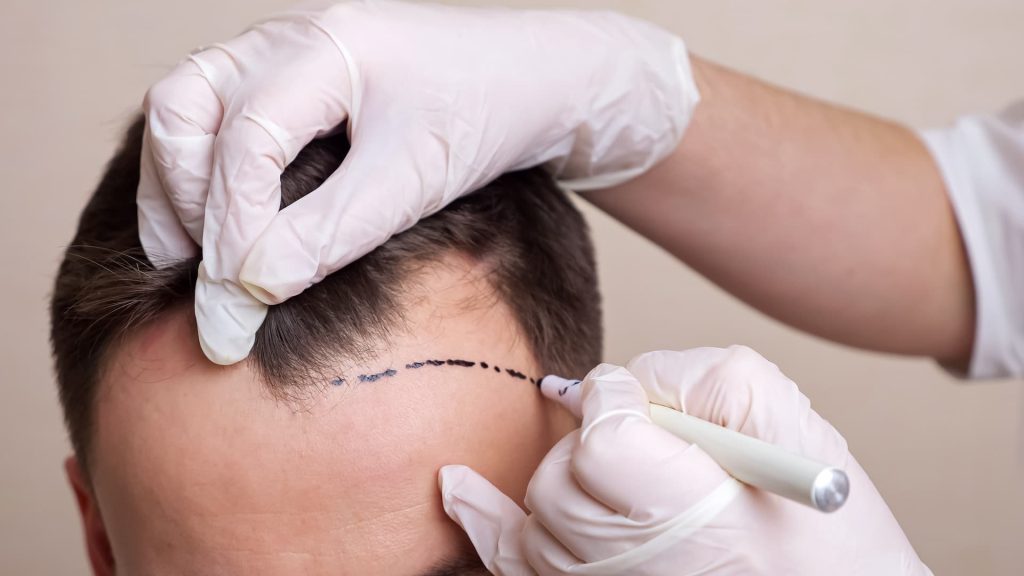
After undergoing FUE hair transplantation, one of the most common questions patients have is how long it will take to recover. The recovery period is an important aspect of the process as it directly impacts the patient’s daily routine and expectations. While the exact duration may vary from person to person, there are general guidelines that can help give an idea of what to expect.
Typically, the initial recovery period after FUE hair transplantation lasts for about 7 to 10 days. During this time, patients may experience some discomfort, swelling, and minor pain in the donor and recipient areas. However, these symptoms are temporary and can be managed with pain medication prescribed by the surgeon.
Within the first 2 to 3 days of recovery, patients are advised to take rest and avoid any strenuous activities that may increase blood flow to the scalp. It is important to avoid excessive sweating, bending over, and any activities that may cause trauma or pressure to the newly transplanted hair follicles. Patients are often recommended to sleep with their head elevated and avoid sleeping on the side or belly to minimize the risk of damaging the grafts.
Can Fue Hair Transplantation Be Performed On Women?
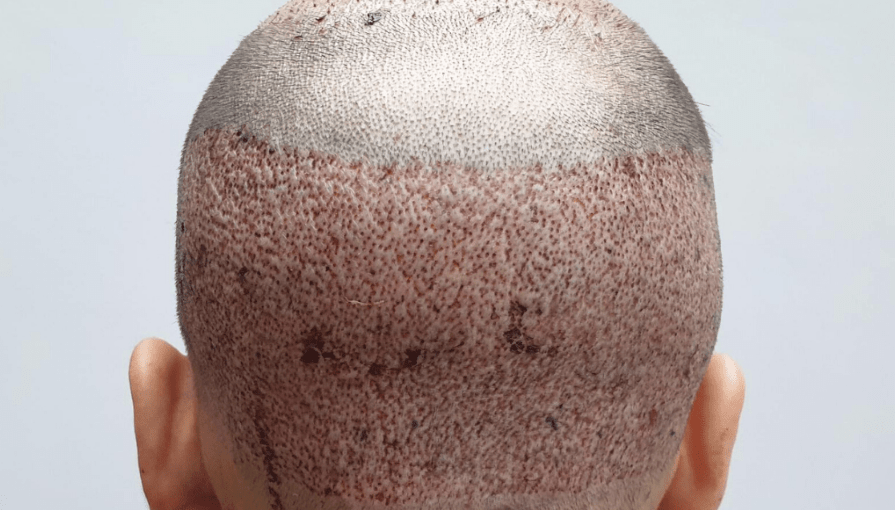
Follicular Unit Extraction (FUE) hair transplantation is a popular and effective procedure for treating hair loss in both men and women. While it is commonly performed on men, there is a growing number of women seeking FUE hair transplantation as well. So, can FUE hair transplantation be performed on women? Let’s explore this topic further.
The answer is yes, FUE hair transplantation can be performed on women. However, there are a few factors that need to be taken into consideration. Women experiencing hair loss should first consult with a qualified hair transplantation specialist who can assess their individual situation and determine if they are good candidates for the procedure.
One factor to consider is the cause of hair loss in women. Unlike men, who often experience male pattern baldness, women’s hair loss can be caused by a variety of factors, such as hormonal imbalances, thyroid problems, or certain medical conditions. It is important to identify and address the underlying cause of hair loss before undergoing FUE hair transplantation.
- Another factor to consider is the quality and density of the donor hair in women. FUE hair transplantation involves harvesting individual hair follicles from the donor area, usually the back of the head, and transplanting them to the recipient area. The success of the procedure depends on having a sufficient number of healthy hair follicles to transplant. Women with thinning or sparse donor hair may not be suitable candidates for FUE hair transplantation.
- Lastly, it is important to have realistic expectations about the results of FUE hair transplantation in women. While the procedure can effectively restore hair in many cases, the natural hair growth patterns and characteristics of women’s hair may differ from men’s. Women may also require multiple sessions of FUE hair transplantation to achieve the desired results.
| Advantages of FUE hair transplantation for women: |
|---|
|
|
|
In conclusion, FUE hair transplantation can indeed be performed on women, but it is important to consult with a qualified specialist to determine if it is the right option for you. With the advancements in technology and techniques, more women are benefiting from this hair restoration procedure. If you are a woman experiencing hair loss, consider exploring FUE hair transplantation as a potential solution to regain your confidence and restore your hair.
What Is The Cost Of Fue Hair Transplantation?
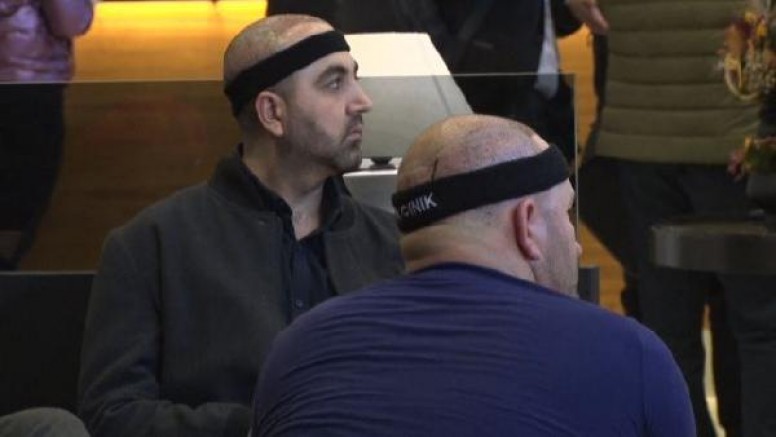
FUE, or Follicular Unit Extraction, is a popular and effective method of hair transplantation. It involves extracting individual hair follicles from the donor area of the scalp and implanting them into the recipient area, where the hair loss or baldness has occurred.
FUE hair transplantation is a surgical procedure that has gained popularity due to its natural-looking results and minimal scarring. Unlike the traditional strip method, FUE does not require a linear incision, making it a less invasive option for hair restoration.
So, what is the cost of FUE hair transplantation? The cost of this procedure can vary widely depending on various factors such as the location of the clinic, the experience of the surgeon, the number of grafts required, and additional services included in the package.
Frequently Asked Questions
What is FUE hair transplantation?
FUE hair transplantation is a surgical procedure that involves extracting individual hair follicles from a donor area and implanting them into the bald or thinning areas of the scalp.
How does FUE hair transplantation work?
FUE hair transplantation works by using a specialized punch tool to extract individual hair follicles from the donor area, typically the back or sides of the scalp. These follicles are then carefully implanted into the recipient area using small incisions.
What are the advantages of FUE hair transplantation?
Some advantages of FUE hair transplantation include minimal scarring, quicker recovery time, a natural-looking hairline, and the ability to harvest hair follicles from different parts of the body.
Are there any risks or side effects of FUE hair transplantation?
Like any surgical procedure, FUE hair transplantation carries certain risks and potential side effects. These may include bleeding, infection, scarring, and temporary shock loss of transplanted hairs.
How long does it take to recover from FUE hair transplantation?
The recovery time for FUE hair transplantation varies from person to person, but most individuals can resume their normal activities within a week or two. It may take several months for the transplanted hairs to fully grow and blend in with the existing hair.
Can FUE hair transplantation be performed on women?
Yes, FUE hair transplantation can be performed on women who are experiencing hair loss or thinning. However, the suitability of the procedure for each individual will be determined during a consultation with a hair transplant specialist.
What is the cost of FUE hair transplantation?
The cost of FUE hair transplantation varies depending on various factors such as the extent of hair loss, the number of grafts needed, the skill and experience of the surgeon, and the location of the clinic. It is best to consult with a hair transplant clinic to get an accurate cost estimate.
Please check other subjects :
All Details of Hair Transplantation
What is FUE Hair Transplant Method?
Tips for a Successful Hair Transplant Recovery
The Benefits of FUE Hair Transplantation
